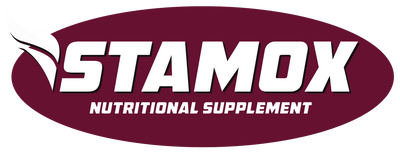Understanding Athletic Power: The Foundation of Peak Performance
Athletic power represents the perfect fusion of strength and speed—a critical component for athletes in virtually every sport discipline. When we discuss power in athletic contexts, we're referring to the ability to exert maximum force in minimal time. This capacity fundamentally determines how effectively you can sprint, jump, throw, or excel in explosive movements that characterize competitive sports.
The science behind power development reveals its multifaceted nature, encompassing neuromuscular coordination, muscular strength, and energy system efficiency. Elite performers recognize that power optimization requires a comprehensive approach that extends beyond traditional training paradigms.
For recreational and professional athletes alike, developing power translates directly to improved performance metrics. Cyclists generate more watts during critical race moments, runners achieve faster sprint finishes, and team sport athletes display superior acceleration and change-of-direction abilities—all manifestations of enhanced power output.
The Science of Power Production in Human Movement
At its physiological core, power production relies on the adenosine triphosphate-creatine phosphate (ATP-CP) energy system—our body's immediate energy reservoir for explosive movements. This system fuels efforts lasting approximately 0-10 seconds before requiring regeneration. The efficiency of this regeneration process significantly impacts your capacity for repeated power efforts.
Fast-twitch muscle fibers (Type II) play the predominant role in power expression. These fibers contract more rapidly and forcefully than their slow-twitch counterparts but fatigue more quickly. Genetic predisposition influences your natural fiber-type distribution, but targeted training can optimize the recruitment and efficiency of existing fast-twitch fibers.
Neural factors, including motor unit recruitment patterns and inter-muscular coordination, further determine power output. The rate of force development—how quickly you can reach maximum force—often proves more decisive in athletic scenarios than absolute strength alone.
Nutritional Strategies for Optimal Power Development
The foundation of power performance begins with strategic nutrition. Beyond basic macronutrient considerations, specific nutritional compounds have demonstrated remarkable efficacy in enhancing power output across various athletic disciplines.
Timing your nutrient intake creates powerful metabolic windows that can amplify training adaptations. Pre-exercise nutrition should emphasize readily available carbohydrates to maximize glycogen stores, while post-exercise nutrition accelerates recovery through protein synthesis stimulation and glycogen replenishment.
Performance-Enhancing Natural Compounds
Scientific research has identified several natural compounds that significantly impact power metrics. Beetroot extract stands at the forefront of these ergogenic aids, with numerous peer-reviewed studies confirming its performance-enhancing properties.
The primary active component in beetroot—nitrate—converts to nitric oxide in the body, enhancing blood flow, mitochondrial efficiency, and muscle contractile function. This physiological cascade directly translates to improved power output, particularly during high-intensity exercise intervals.
Stamox represents the pinnacle of beetroot extract supplementation—a 100% pure, patented powder derived from Norwegian beetroots using advanced extraction techniques that preserve maximum bioavailability of performance-enhancing compounds.
---PRODUCT---
Stamox works by naturally boosting nitric oxide levels, which dilates blood vessels and improves oxygen delivery to working muscles. For power athletes, this translates to a remarkable capacity increase—clinical studies show improvements of up to 15% in power output within 2-3 hours of consumption. This acute performance enhancement makes it particularly valuable for competition scenarios and high-intensity training sessions.
Beyond immediate performance benefits, consistent Stamox supplementation supports cardiovascular health through blood pressure regulation and enhanced circulation—physiological advantages that contribute to better recovery between training sessions and long-term athletic development.
Training Methodologies for Maximum Power Development
Developing explosive power requires specialized training protocols that specifically target the neuromuscular components of force production. The most effective power development programs incorporate periodized training cycles that systematically manipulate intensity, volume, and recovery parameters.
Progressive overload remains the fundamental principle in power development, but its application differs significantly from traditional strength training approaches. Rather than focusing exclusively on increasing loads, power training emphasizes movement velocity and technique optimization.
Plyometric Training: The Stretch-Shortening Cycle
Plyometric exercises leverage the stretch-shortening cycle—a natural elastic property of muscles and tendons that enhances force production. This training modality includes jumping, bounding, and explosive movement patterns that teach the neuromuscular system to generate maximum force in minimal time.
The efficacy of plyometric training depends on proper progression and recovery management. Beginning with basic movements and gradually increasing complexity and intensity allows the connective tissues to adapt safely while neural pathways become more efficient at recruiting fast-twitch muscle fibers.
"Plyometric training represents one of the most effective methods for developing power, but the intensity must be carefully calibrated to the athlete's training status. An inappropriate progression can lead to diminished returns or increased injury risk." – Dr. Michael Stone, Sports Physiologist
For endurance athletes like cyclists, runners, and triathletes, low-to-moderate volume plyometric training can significantly enhance economy of movement and finishing sprint capacity without compromising endurance parameters.
Velocity-Based Training: Optimizing Force-Velocity Relationships
Velocity-based training (VBT) employs technology to measure movement speed during resistance exercises, allowing for precise loading strategies that target specific aspects of the force-velocity curve. This approach ensures training occurs at optimal loads for power development rather than defaulting to percentages of one-repetition maximum.
Research indicates that maintaining movement velocities above 0.8-1.0 meters per second during resistance training maximizes power development. Modern velocity tracking devices enable athletes to maintain these optimal ranges across training sessions, even as fatigue accumulates.
The implementation of VBT has revolutionized power training by providing objective feedback that guides load selection and exercise termination. By ceasing sets when velocity drops below target thresholds, athletes can ensure training quality remains high and neural fatigue is minimized.
Periodization for Power Athletes: Annual Planning
Developing peak power capabilities requires sophisticated periodization strategies that account for competition schedules, recovery demands, and progressive adaptation. Unlike endurance training, power development demands careful management of neural fatigue and central nervous system resources.
The most effective periodization models for power athletes incorporate undulating intensity patterns that prevent accommodation while systematically developing the physiological and neural foundations for explosive performance.
Phase-Specific Training Emphases
Effective power development follows a logical progression through distinct training phases:
- Anatomical Adaptation Phase: Establishes structural integrity through higher-repetition, moderate-load resistance training
- Maximum Strength Phase: Develops force production capacity through heavy resistance training (80-95% 1RM)
- Conversion Phase: Translates strength gains into sport-specific power through ballistic and velocity-focused training
- Competition/Maintenance Phase: Preserves power capabilities while reducing training volume to emphasize recovery
This sequential approach ensures that each physiological quality builds upon previously established adaptations, creating a comprehensive foundation for maximum power expression when it matters most.
| Training Phase | Duration | Primary Objective | Key Training Methods |
|---|---|---|---|
| Anatomical Adaptation | 3-6 weeks | Structural Development | Circuit Training, Moderate Loads (60-75% 1RM) |
| Maximum Strength | 4-8 weeks | Force Production | Heavy Resistance Training, Low Repetitions |
| Conversion | 3-5 weeks | Power Development | Olympic Lifts, Ballistic Training, Plyometrics |
| Competition | 1-3 weeks | Performance Peaking | Sport-Specific Power, Reduced Volume |
Recovery Protocols for Power Optimization
The development of power capacity depends as much on strategic recovery as it does on training stimulus. The high-intensity nature of power training creates substantial demands on both the muscular and nervous systems, necessitating comprehensive recovery strategies.
Contemporary recovery science emphasizes the integration of multiple modalities, creating synergistic effects that accelerate adaptation and minimize performance decrements between training sessions.
Sleep Quality: The Foundation of Neural Recovery
Sleep represents the single most powerful recovery tool available to athletes. During deep sleep stages, human growth hormone secretion peaks, facilitating tissue repair and adaptation. For power athletes, who place significant demands on the central nervous system, sleep quality directly influences subsequent performance capabilities.
Research demonstrates that insufficient sleep (less than 7 hours) significantly impairs power output, with decrements of 5-15% observed in laboratory settings. Furthermore, chronic sleep deficit accumulates over time, potentially negating training adaptations despite consistent workout adherence.
Practical sleep optimization strategies include:
- Establishing consistent sleep-wake cycles that align with circadian rhythms
- Creating sleep environments that minimize light and noise disruption
- Limiting screen exposure in the 60-90 minutes preceding bedtime
- Implementing relaxation protocols to accelerate sleep onset
These approaches collectively enhance both sleep quantity and quality, creating the physiological conditions necessary for optimal power development.
Strategic Supplementation for Accelerated Recovery
Nutrition timing and composition significantly influence recovery trajectories following power-focused training sessions. Beyond macronutrient considerations, specific compounds have demonstrated efficacy in accelerating recovery processes relevant to power development.
Beetroot extract supplementation through products like Stamox offers complementary recovery benefits alongside its acute performance enhancement effects. The nitric oxide-mediated improvements in circulation accelerate nutrient delivery to damaged tissues while facilitating metabolic waste removal—physiological processes crucial for rapid recovery between training sessions.
Practical Applications: Sport-Specific Power Development
The practical application of power training principles must be tailored to sport-specific demands and individual athlete characteristics. While foundational concepts remain consistent, implementation details vary considerably across sporting disciplines.
Successful power development programs identify the precise power expression requirements within a sport and design training interventions that replicate these demands while progressively overloading the relevant physiological systems.
Cycling: Optimizing Power-to-Weight and Sustained Power Output
For cyclists, power development focuses on two critical metrics: absolute power output (measured in watts) and power-to-weight ratio (watts per kilogram). These determinants influence performance across various race scenarios, from sprint finishes to mountain ascents.
Training interventions typically include:
- Force-velocity profiling to identify individual limiting factors in power production
- Sport-specific resistance training emphasizing single-leg pressing movements
- High-intensity interval protocols targeting specific power durations relevant to competition demands
- Technical refinement to maximize mechanical efficiency during power transfer
Supplementation strategies, particularly with Stamox beetroot extract, have demonstrated significant efficacy in cycling performance. Research shows immediate improvements in sustained power output following consumption, with effects peaking 2-3 hours post-ingestion—making it an ideal pre-race or pre-training intervention.
Running and Multisport Events: Balancing Power and Economy
For runners, triathletes, and multisport athletes, power development must complement rather than compromise movement economy. Training interventions focus on developing power reserves for tactical surges, terrain changes, and finishing sprints while maintaining efficient technique.
Effective strategies include:
- Hill sprints and resisted running to develop sport-specific power
- Medicine ball throwing exercises to enhance total body power coordination
- Plyometric training calibrated to maintain joint health and enhance elastic energy utilization
- Technical drills that integrate power expression with optimal biomechanics
The integration of Stamox supplementation provides these athletes with dual benefits—enhancing both power capabilities and aerobic efficiency through improved oxygen utilization. This dual-action mechanism makes it particularly valuable for events requiring both explosive power and endurance capacity.
Frequently Asked Questions About Athletic Power Development
How Quickly Can Athletes Expect to See Improvements in Power Metrics?
Initial improvements in power metrics often stem from neural adaptations rather than structural changes. Most athletes observe measurable improvements in performance tests within 2-4 weeks of implementing specialized power training. However, substantial changes in power capacity typically require 8-12 weeks of consistent training stimulus.
Nutritional interventions like Stamox supplementation can accelerate this timeline by providing immediate physiological advantages that complement training adaptations. The acute performance enhancement effects (occurring within 2-3 hours) allow athletes to train at higher intensities, potentially accelerating long-term adaptational responses.
Can Endurance Athletes Benefit from Power Training Without Compromising Aerobic Capacity?
Research conclusively demonstrates that properly implemented power training enhances rather than compromises endurance performance. The key lies in appropriate volume management and exercise selection. Low-to-moderate volumes of power training (1-2 sessions weekly) improve neuromuscular efficiency and economy of movement without interfering with endurance adaptations.
For endurance athletes concerned about potential interference effects, supplementation with compounds that support both power and endurance parameters—such as the nitrates found in Stamox—can provide an effective bridge between these sometimes competing training goals.
When integrated properly, power development enhances late-race performance capacity, improves technique resilience under fatigue, and expands the performance ceiling that ultimately determines competitive outcomes in endurance events.






